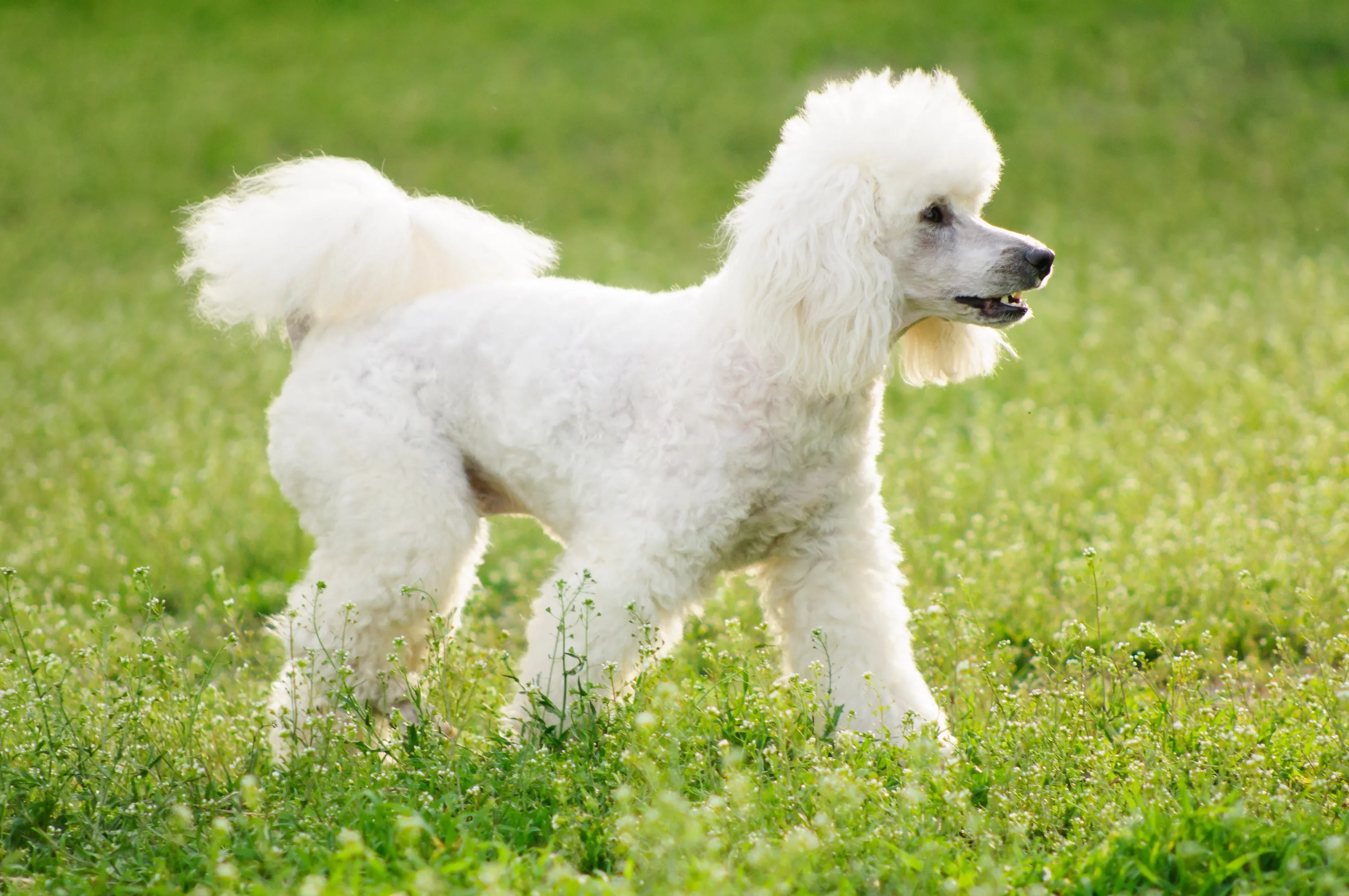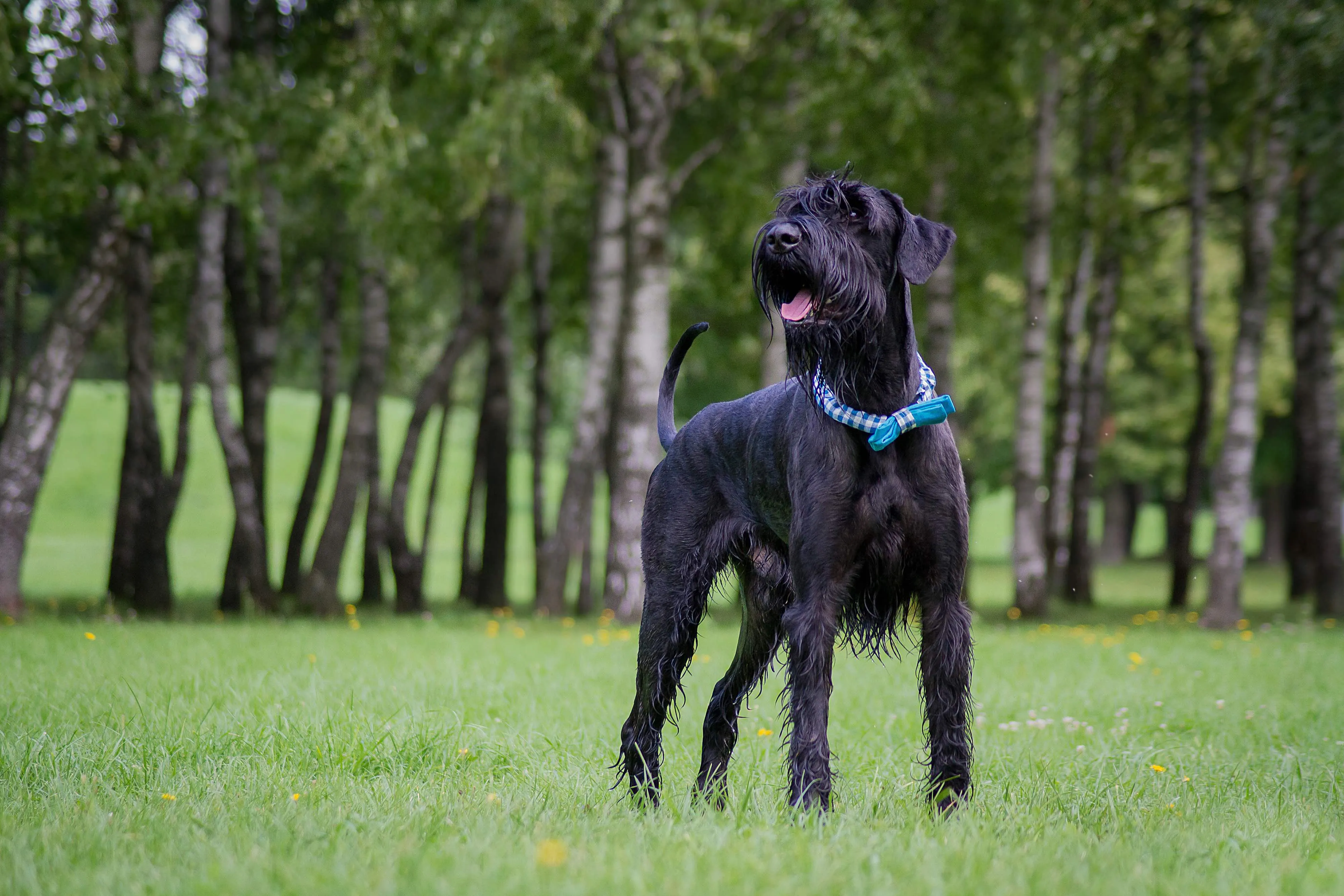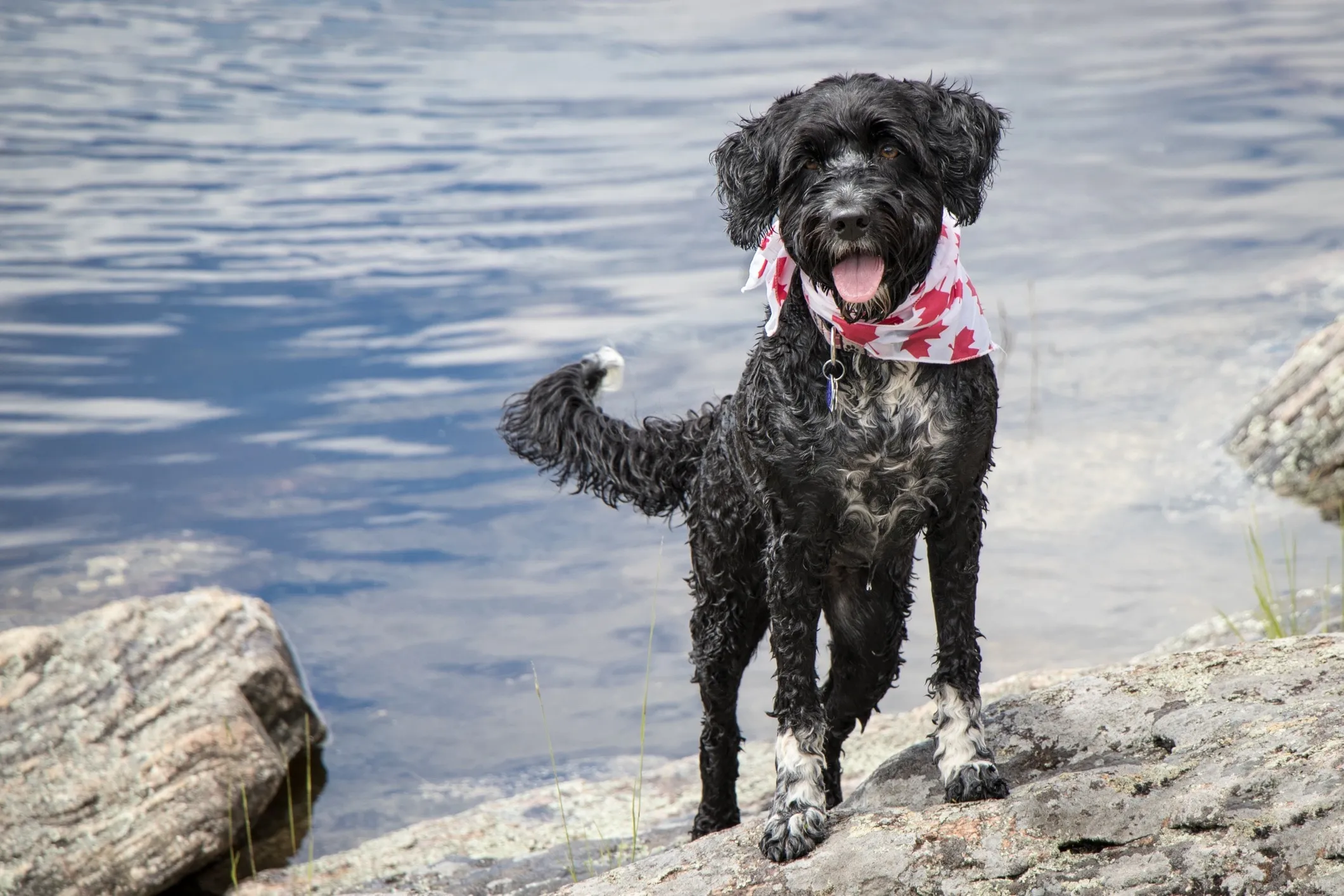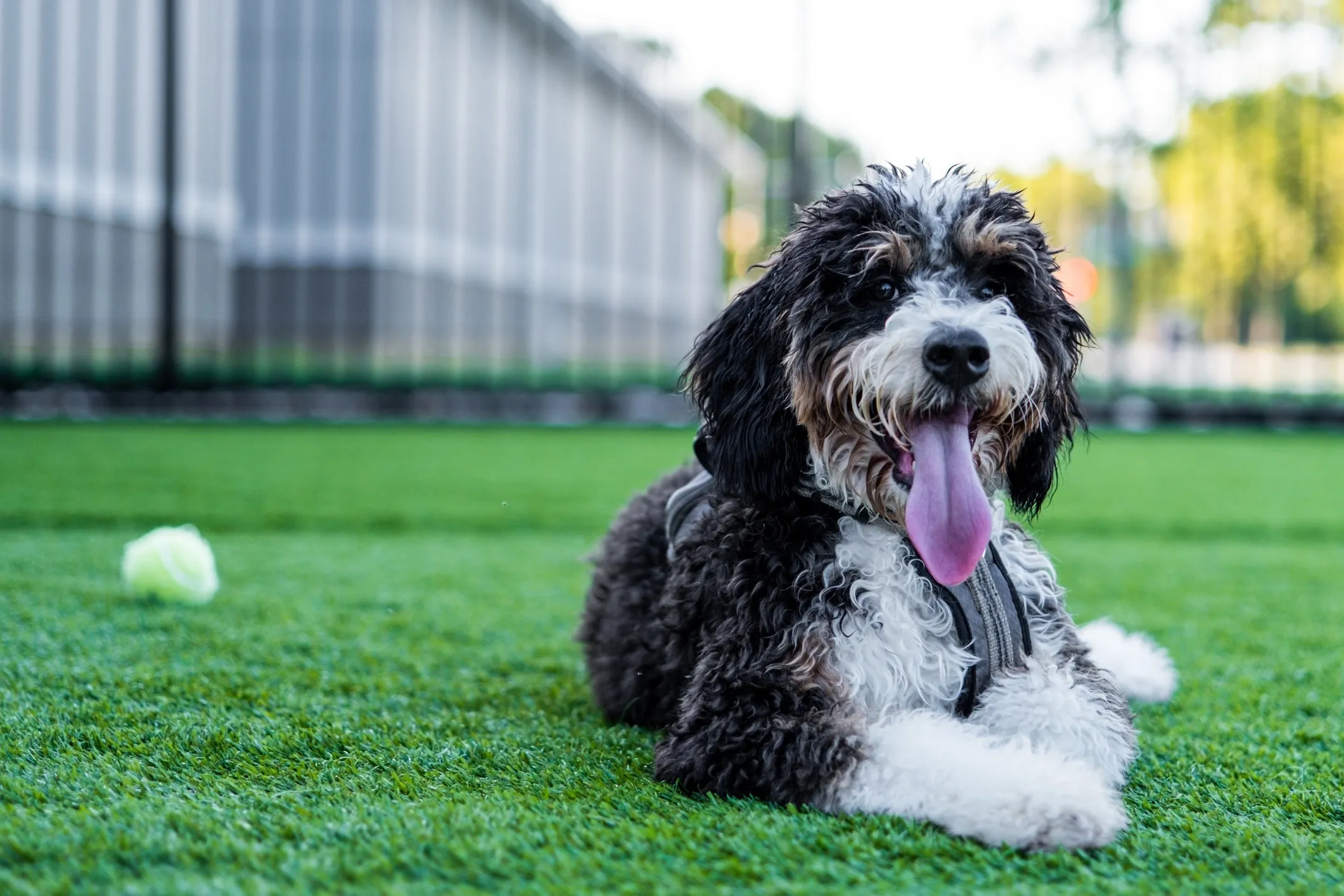For many dog lovers, the joy of companionship can be overshadowed by the challenges of allergies or the constant battle against shedding. While no dog is entirely “allergen-free,” certain breeds are known for their low-shedding coats, which can significantly reduce dander and hair around the home. If you’re seeking a larger canine friend without the excessive shedding, you’re in luck. This guide explores some of the best medium to large dog breeds that don’t shed much, making them ideal companions for those who value a clean home and fewer allergy triggers.
These unique breeds offer the benefits of a larger dog—often including a robust build, suitability for active lifestyles, and a strong presence—without the typical shedding concerns. Understanding their specific grooming needs, temperament, and exercise requirements is key to finding the perfect low-shedding partner for your family. We’ll delve into each breed’s characteristics, helping you decide which medium size dog that doesn t shed is the right fit for your lifestyle.
Understanding Low-Shedding Coats
Dogs generally shed their old or damaged hair. However, breeds categorized as “low-shedding” or “hypoallergenic” often have hair that grows continuously, much like human hair, rather than having a short growth cycle that leads to frequent shedding. This type of coat traps dander and loose hairs within its structure, requiring regular brushing and professional grooming to remove them and prevent matting. This process, rather than the dog naturally dropping hair, is what makes these breeds more manageable for allergy sufferers and those who prefer a cleaner living space. Even with low-shedding coats, it’s essential to remember that all dogs produce dander, saliva, and urine, which contain allergens. Regular grooming and a clean home environment remain crucial for minimizing allergic reactions.
Our Top Picks: Medium to Large Dogs with Minimal Shedding
Finding dog breeds that don t shed a lot in the medium to large size category provides a wonderful balance of presence and cleanliness. These breeds offer diverse personalities and energy levels, ensuring there’s a perfect match for various households. From playful companions to stately protectors, here are some excellent choices for those seeking a larger dog without the hassle of excessive hair.
1. Standard Poodle
The Standard Poodle is a truly regal and intelligent breed, renowned for its elegant appearance and exceptional brainpower. Standing over 15 inches tall at the shoulder, these dogs are well within the medium to large range. Their dense, curly coat is single-layered and grows continuously, effectively trapping loose hair and dander, making them an excellent choice for individuals concerned about shedding and allergies. Regular professional grooming every 4-6 weeks, along with daily brushing at home, is essential to prevent matting and maintain their distinguished look. Standard Poodles are highly trainable, eager to please, and thrive on mental stimulation and physical activity. They excel in dog sports, obedience, and are wonderful family companions due to their affectionate and playful nature.
 White Standard Poodle walking through green grass
White Standard Poodle walking through green grass
Standard Poodles were originally bred as water retrievers, which explains their athletic build and love for swimming. Their intelligence means they learn quickly but also require consistent training and engagement to prevent boredom. They form strong bonds with their families and are known for their loyalty and gentle demeanor, especially when well-socialized from a young age. Their non-shedding coat comes in various colors, from classic white and black to apricot and silver.
2. Standard Schnauzer
The Standard Schnauzer is a robust, square-built dog with a distinctive bearded snout and expressive eyebrows, making them easily recognizable. This medium-sized breed typically weighs between 30 and 50 pounds and stands 17-20 inches tall. Their wiry, double coat sheds minimally, though regular hand-stripping or professional grooming is necessary to maintain its texture and keep it free of loose hair. Weekly brushing at home is also recommended to prevent tangles and keep their coat in top condition.
Standard Schnauzers are known for their intelligence, alertness, and protective nature, making them excellent watchdogs and devoted family members. They are energetic and require daily exercise, such as long walks, playtime, or even dog sports. Their cleverness means they respond well to training, but they also possess a stubborn streak that requires a consistent and firm approach. With proper socialization, they can be great with children and other pets, fitting well into active households.
3. Giant Schnauzer
As their name suggests, Giant Schnauzers are the largest of the Schnauzer breeds, standing 23-27 inches tall and weighing between 55 and 85 pounds. These powerful and imposing dogs share the same wiry, low-shedding coat as their smaller counterparts, making them suitable for those seeking a substantial breed with minimal hair loss. Like the Standard Schnauzer, they require regular hand-stripping or professional grooming every 6-8 weeks, coupled with daily brushing, to keep their dense coat healthy and free of mats.
 Black wet Giant Schnauzer wearing a blue bow collar standing in a park
Black wet Giant Schnauzer wearing a blue bow collar standing in a park
Giant Schnauzers are highly intelligent, courageous, and loyal, often used in police and military work due to their strong work ethic and protective instincts. They need a confident owner and extensive socialization and training from puppyhood. These active dogs demand significant daily exercise, including long walks, runs, and engaging play sessions to prevent boredom and destructive behaviors. When properly exercised and trained, they are calm and loving companions who thrive on being part of family activities.
4. Portuguese Water Dog
The Portuguese Water Dog is a medium-sized, robust, and athletic breed, standing 17-23 inches tall and weighing 35-60 pounds. True to their heritage as aids to fishermen, these dogs possess a waterproof, single coat that is either wavy or curly and sheds very little. This makes them an excellent choice for active families who want a well behaved dog breeds that don t shed that loves the water. Regular grooming, including brushing several times a week and professional clipping every 6-8 weeks, is crucial to prevent matting and maintain their coat’s health.
 Black and white Portuguese Water Dog wearing a red maple leaf bandana in front of water
Black and white Portuguese Water Dog wearing a red maple leaf bandana in front of water
Portuguese Water Dogs are known for their intelligence, eagerness to please, and energetic personalities. They thrive on activity and mental stimulation, making them ideal for families who enjoy hiking, swimming, or dog sports. Without adequate exercise and engagement, they can become bored and exhibit unwanted behaviors. Their friendly and affectionate nature makes them wonderful family pets, readily bonding with all members and enjoying interactive play.
5. Labradoodle
The Labradoodle is a popular crossbreed, typically a mix between a Labrador Retriever and a Poodle. While coat types can vary, many Labradoodles inherit the low-shedding, often wavy or curly coat of their Poodle parent, making them a fantastic option for those seeking a medium to large dog that doesn’t shed. Their size can range from medium to standard, generally weighing 50-80 pounds and standing 21-24 inches tall, depending on the size of the Poodle parent. Regular brushing and professional grooming every 6-8 weeks are necessary to keep their coats free of mats and looking their best.
 Brown Standard Labradoodle walking in a park
Brown Standard Labradoodle walking in a park
Labradoodles are cherished for their friendly, outgoing, and intelligent nature, often making them excellent family pets. They are highly trainable and generally eager to please, inheriting the best traits from both parent breeds. They require a good amount of exercise to stay happy and healthy, enjoying activities like fetch, walks, and playtime in a secure yard. Early socialization is important to ensure they grow into well-adjusted adults, making them a joy to live with. Many are considered easy to train dogs that don t shed.
6. Goldendoodle
Similar to the Labradoodle, the Goldendoodle is a beloved crossbreed, resulting from a Golden Retriever and a Poodle. Their size can vary widely, but standard Goldendoodles often fall into the medium to large category, weighing 50-75 pounds and standing 20-24 inches tall. Like Labradoodles, their coat type can vary, but many possess the low-shedding, wavy or curly Poodle-like coat that is highly sought after. To prevent matting and keep their coat healthy, frequent brushing (several times a week) and professional grooming every 6-8 weeks are essential.
Goldendoodles are known for their incredibly friendly, gentle, and intelligent dispositions, making them superb family dogs. They are patient with children and generally get along well with other pets. Their eagerness to please and intelligence makes them highly trainable, often excelling in obedience and agility. Goldendoodles are moderately energetic and require daily exercise to maintain their physical and mental well-being, enjoying walks, playtime, and interactive games.
7. Irish Water Spaniel
The Irish Water Spaniel is a distinctive, large sporting dog with a unique “rat tail” and a profusion of tight, crisp curls covering its body, contrasted by a smooth face. They stand 21-24 inches tall and weigh 55-68 pounds. Their liver-colored, water-repellent coat is low-shedding but requires diligent grooming to prevent matting. Regular brushing and professional trimming every few months are necessary to keep their coat in optimal condition.
Irish Water Spaniels are intelligent, adventurous, and possess a clownish sense of humor, often making their families laugh. They are highly energetic and require significant daily exercise to burn off steam. Activities like swimming, retrieving, and long runs are perfect for this breed. They are highly trainable but can have an independent streak, so consistent, positive reinforcement training from an early age is important. When well-exercised and socialized, they are affectionate and loyal companions.
8. Bernedoodle
A cross between a Bernese Mountain Dog and a Poodle, the Bernedoodle offers the charm of the Bernese with the low-shedding qualities of the Poodle. Standard Bernedoodles are large dogs, often weighing 70-90 pounds and standing 23-29 inches tall. Their coats vary from wavy to curly, and most shed minimally. However, their dense coat requires regular brushing (at least 2-3 times a week) and professional grooming every 6-8 weeks to prevent matting.
 Large Bernedoodle dog lying in grass with his tongue out
Large Bernedoodle dog lying in grass with his tongue out
Bernedoodles are known for their gentle, affectionate, and playful nature, inheriting the best traits from both parent breeds. They are excellent family dogs, patient and loving with children and often getting along well with other pets. Despite their calm demeanor, they are active dogs that need daily exercise, such as walks, hikes, and playtime, to keep them happy and well-adjusted. Their intelligence makes them highly trainable, eager to please, and responsive to positive reinforcement.
9. Afghan Hound
The Afghan Hound is an ancient and aristocratic breed, instantly recognizable by its long, flowing, silky coat and proud demeanor. These large dogs stand 25-27 inches tall and can weigh 50-60 pounds. Despite their luxurious appearance, Afghan Hounds are low-shedding, though their extensive coat requires significant grooming commitment. Daily brushing is essential to prevent tangles and mats, and regular bathing with high-quality products is necessary to maintain the health and beauty of their coat.
Afghan Hounds are known for their aloof yet charming personality. They are fiercely loyal to their families but can be reserved with strangers. Bred for speed and hunting, they have a strong prey drive and need secure fencing and leashed walks. Their independent nature means they require patient and consistent training. While not overtly affectionate, they form deep bonds and enjoy a comfortable, loving home where their unique personalities are understood and appreciated.
Tips for Living with a Low-Shedding Dog
Even with a low-shedding breed, managing a dog in a home requires certain practices to maintain cleanliness and minimize allergens. Adopting these habits will ensure a harmonious environment for both you and your furry friend.
Keep Up With Grooming
Regular grooming is paramount for low-shedding breeds. Because their hair grows continuously and loose hairs are trapped in the coat, frequent brushing (daily or several times a week) is essential to prevent matting and remove trapped dander. Professional grooming every 4-8 weeks, including baths and trims, is also crucial. Using specialized shampoos designed to reduce dander can further help, particularly if allergies are a concern.
Maintain a Clean House
Even with minimal shedding, dander can accumulate. Regular vacuuming, dusting, and washing of bedding (both yours and your dog’s) will help keep allergens at bay. Utilizing air purifiers with HEPA filters and ensuring good ventilation can also improve air quality and reduce airborne allergens, creating a fresher and healthier living space for everyone.
Talk to Your Doctor and Veterinarian
If you or a family member suffer from allergies, consult with your healthcare provider about managing symptoms. They can recommend various treatments, including medications, nasal sprays, or immunotherapy. Additionally, discuss your dog’s specific needs with your veterinarian. They can provide advice on optimal grooming routines, diet, and overall health to ensure your low-shedding companion thrives. Avoiding direct contact with your dog’s saliva or urine is also advisable for allergy sufferers, as these can also trigger reactions.
Bringing a medium to large low-shedding dog into your home can provide immense joy and companionship, especially for those who previously thought owning a dog was impossible due to allergies or a dislike of excessive shedding. With proper care, grooming, and understanding, these magnificent breeds offer a wonderful opportunity for a loving and clean canine partnership.
WRITTEN BY
Nicole Zittritsch, LVT, BSc, MPH
